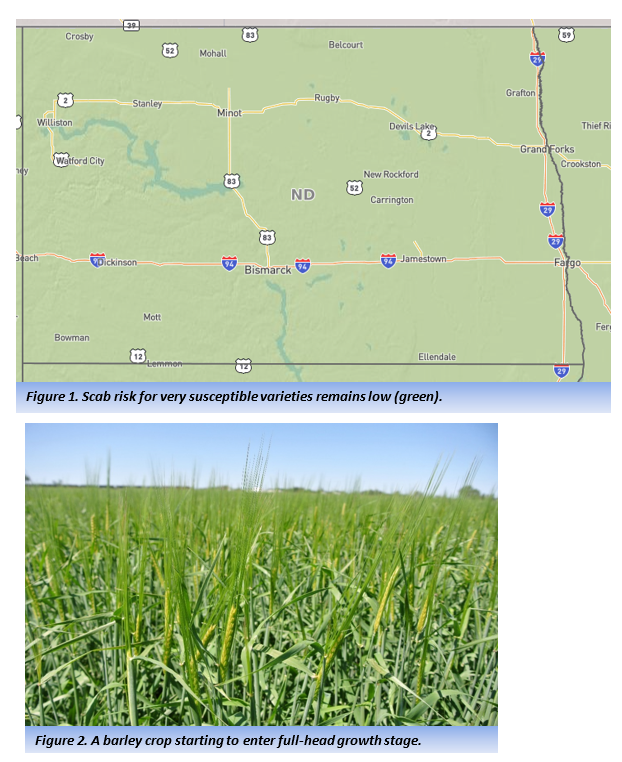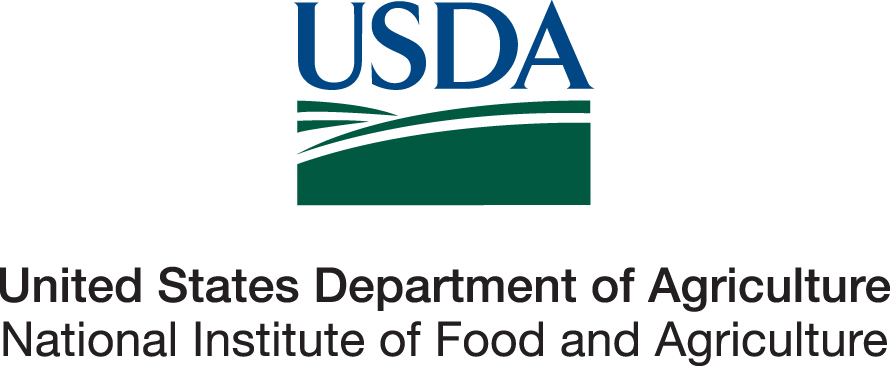Scab Risk Remains Low in ND (06/24/21)
The warm to hot temperatures, infrequent dews, and low humidity have contributed to the low scab risk in the state (Figure 1). Some areas of the state received rainfall this past weekend, but unfavorable scab conditions in the forecast will likely keep scab risk low in the state. Growth stages of small grains vary, ranging from late tillering to a few days past flowering onset (sometimes in the same field). It is important to continue to monitor scab risk in small grain fields as they enter heading (Figure 2) and flowering stages.

Extension Plant Pathology, Cereal Crops


